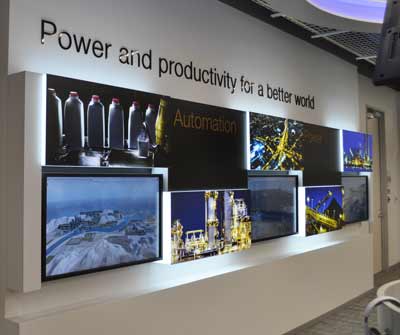LED sign software is the foundation of effective visual communications
LED sign software is what makes digital signage successful. The LED display is responsible for delivering the end product, but software is used to build layouts, integrate applications, program display schedules, control displays remotely and respond to data gathered in real time. With so many responsibilities, it’s important for companies find software that meets their objectives.What is digital LED sign software?
A digital LED sign requires software to function properly – several pieces of software, to be precise. Although digital signage is prized for its ease of use and automatic nature, there’s a lot running under the hood, so to say. Specifically, most digital signage requires four layers of software to properly operate. They include:1. The media player software – The software onboard the media player is responsible for running content and ensuring layouts are displayed on time and in the proper order. Most LED sign software also keeps track of what content is being displayed and when it is being displayed. While this may not be very useful in a vacuum, when paired with other metrics, like engagement patterns, it can provide deep insight into which content is most successful.
Keep in mind that media players typically come with their own proprietary software, so when selecting a media player, make sure its software provides the features you need. For example, some LED sign software will house content on an onboard drive, so even if the internet goes out, the signage will keep working like it should. Other media players, though, rely on content streaming to keep the layouts coming. While streaming players offer some interesting content delivery options, they may not be available when the network goes down. And then there’s some media players that can do both, so there’s a lot of variance here.
2. The device management software – The displays themselves must also be maintained, and a business may operate dozens of them at once. This can make hardware upkeep a constant chore, but device management software helps with the load. With device management software, every display on the network can be closely monitored and controlled remotely.
Device management software can be used to remotely power off displays or reboot and restart them. It can be used to grab live screenshots from operating displays, in order to monitor their performance. Device management software can also provide performance reports, including network status, memory use and operating temperature. This gives IT personnel advanced insight into which displays may be experiencing issues. Device management software can also be used to deploy updates to displays and media players. Finally, the software will automatically alert IT to any changes in the network or concerns with unauthorized usage.
Without device management software, companies are effectively running their displays blind.
3. Content management software – This is what most people think of when they think of LED sign software. A content management system, or CMS, is the nerve center and is what users will usually interface with when altering how the sign functions.
A CMS constantly communicates with the media player software, telling it what content to run and when to run it. It also serves as the backend control for the system, where users can reschedule when certain layouts run, which displays will run the content and what applications to also launch with the signage.
The CMS does most of the work, so companies should choose theirs carefully. Ideally, the CMS would offer extremely precise timing controls, down to the exact second. Depending on where they are installed, digital signage may only have several seconds to get someone’s attention. If the CMS can schedule several rapid fire messages, it will do a better job of maximizing that short window. Some CMS software can make use of auto-updating hooks to interest people, and this requires no involvement on the backend. In fact, this feature is increasingly in demand, and makes perfect sense when the signage must display event schedules, navigation routes or other critical pieces of information. The CMS can pull this updated information without the user having to do anything. It’s like having a digital sidekick manage some of the content creation, and it’s necessary for companies that want to keep their signage relevant. Without intelligent features and tools, it is up to the business to keep cranking out content.
4. Content creation software – Signage is nothing without content, so your LED sign software suite should be come with some content creation tools. This is an area where companies have some flexibility, as there are tons of content creation tools available, including proven stalwarts like PowerPoint or Photoshop. These programs can generate some compelling layouts, but they are static in nature and only exhibit a fraction of the display’s potential.
In the past, content and layout creation have required special skills. Design and artistic abilities are always in demand, and they can be difficult for a business to find. Fortunately, LED sign software developers have produced content creation tools that are far easier to use. These tools are often bundled with the rest of the LED sign software, and usually include a variety of layout templates to choose from, along with backgrounds and other graphics that can be used. It’s also simple to reserve space for applications, like weather, news or social media tickers, without affecting the layout’s look. Even better, content creation software can be used to make quick changes to existing layouts, and the new layout can be pushed to every display in moments. Content creation was once a bottleneck for a lot of companies, but no longer.
LED sign software is what brings the signage to life, and by extension, what brings the organization’s communication goals to fruition. AV integrators can help their clients sift through the many software offerings in the industry, and set them up for digital signage success.


